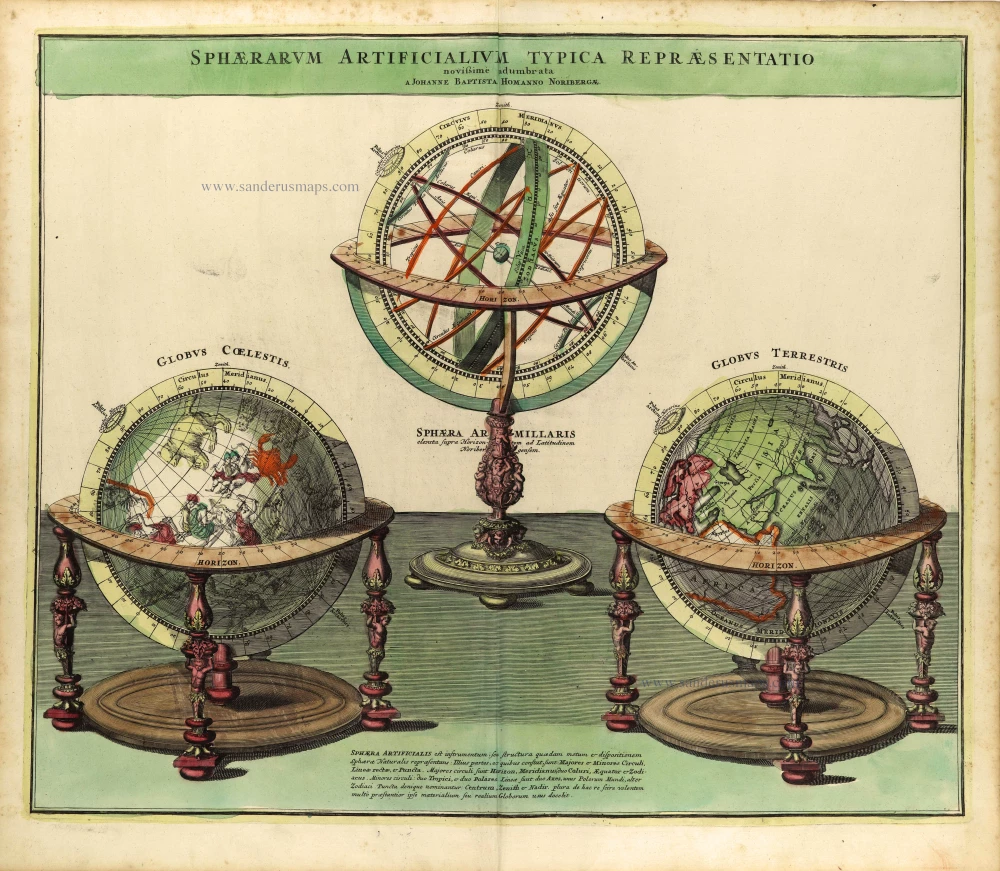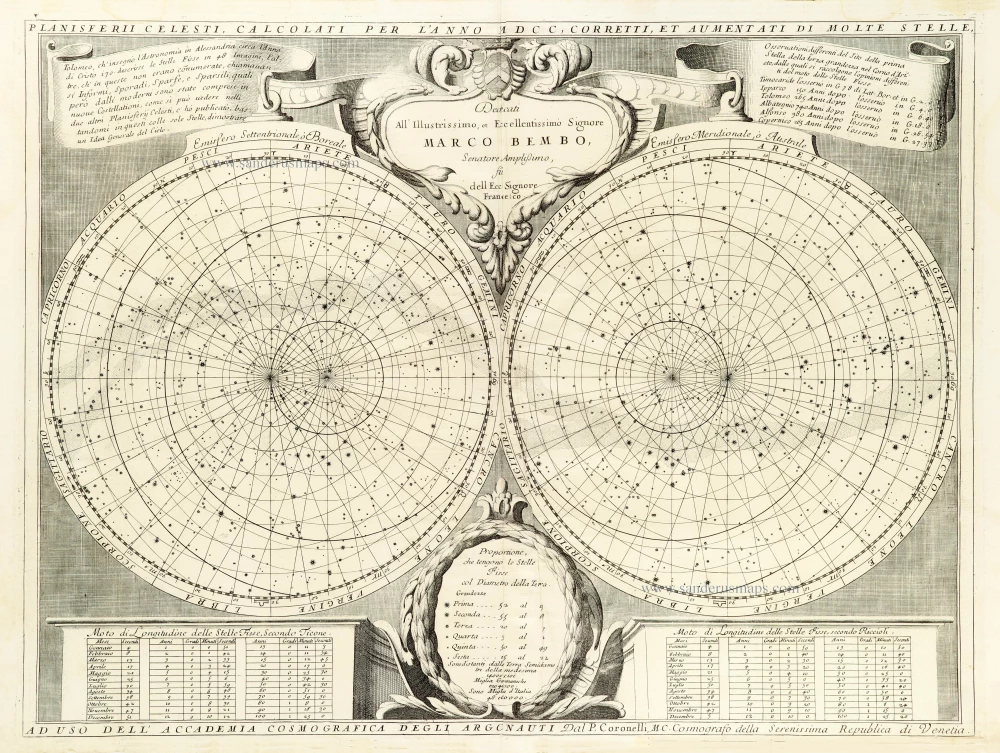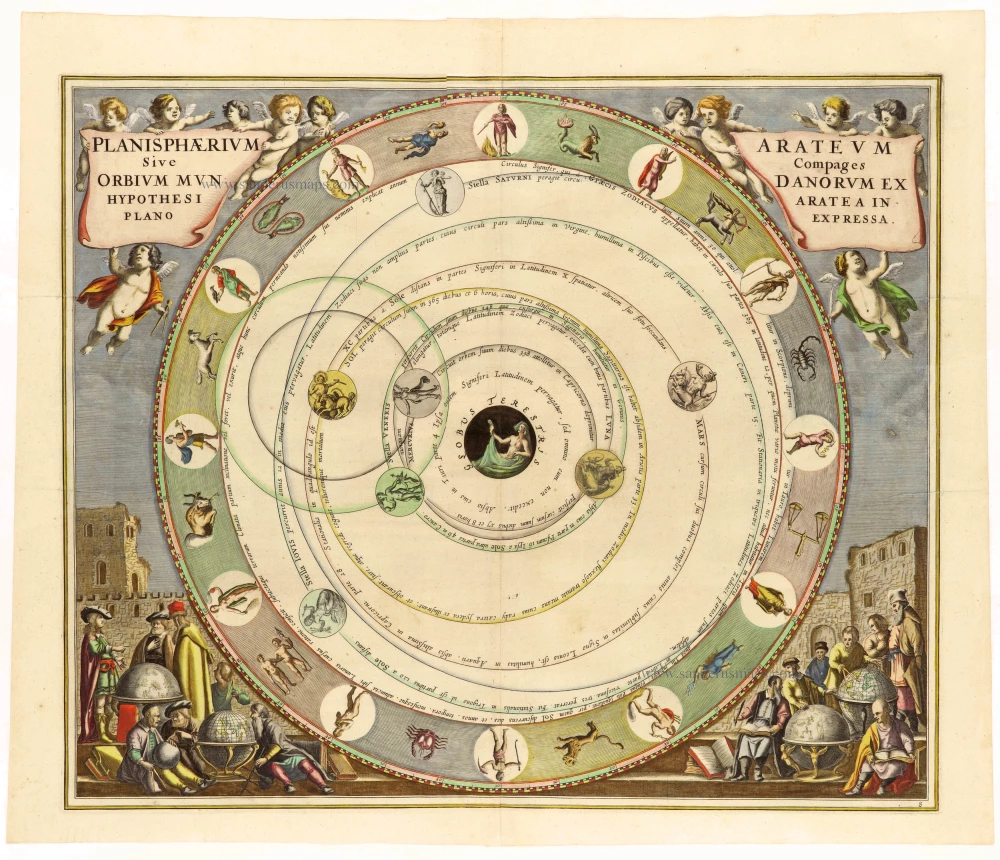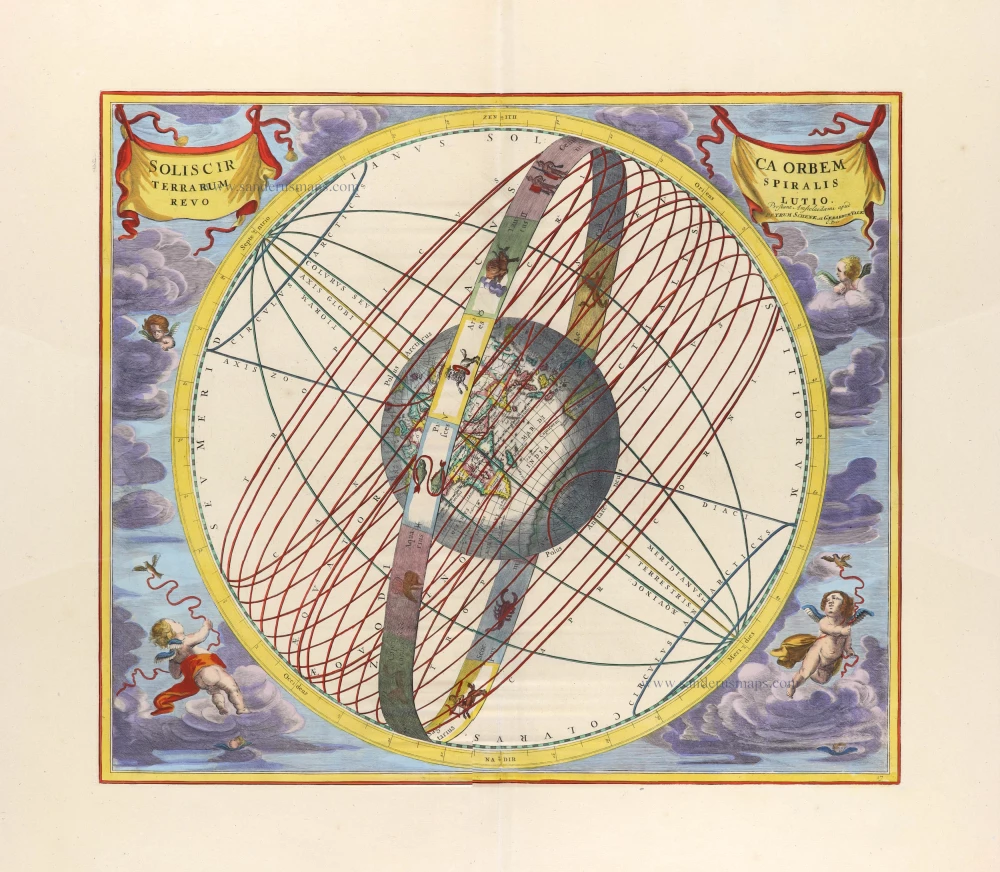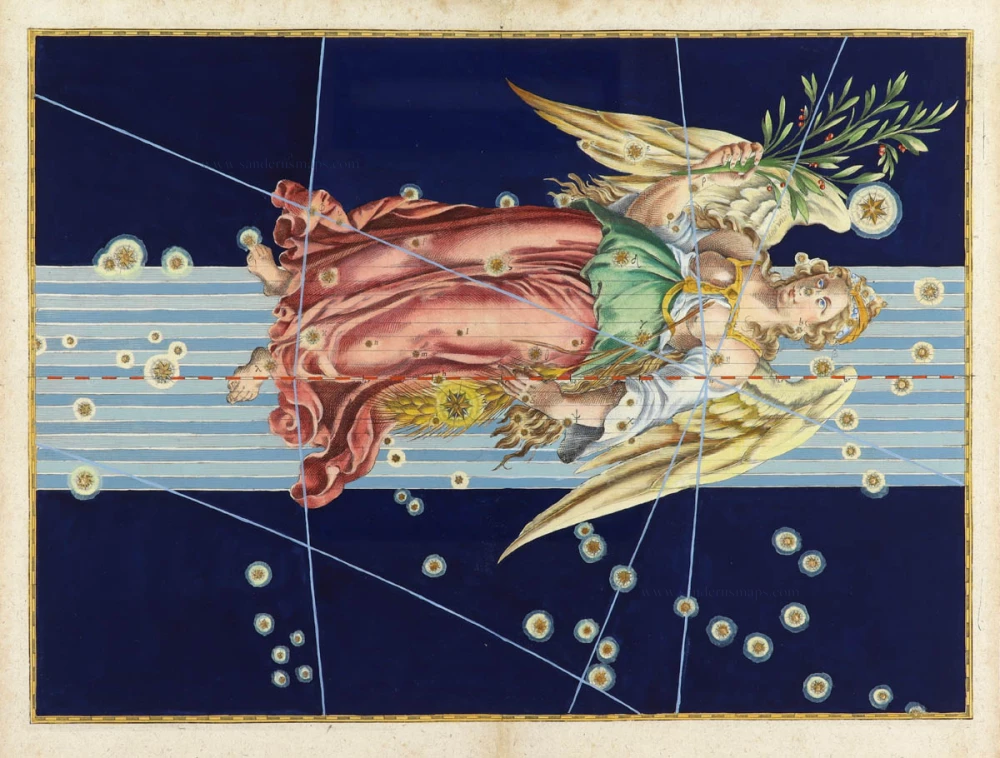PISCES, by Johann Bayer. 1624
Johann Bayer (1572-1625)
Ulm's astronomer. At 20, he studied philosophy and law at the University of Ingolstadt in 1592. Afterwards, he moved to Augsburg to start working as a lawyer, becoming a legal adviser to the city council in 1612. He is primarily known for his work in astronomy, particularly for his work on determining the positions of objects on the celestial sphere.
In 1603, Bayer published a star atlas, the Uranometria Omnium Asterismorum. It was the first atlas to cover the entire celestial sphere, based upon the work of Tycho Brahe. The Uranometria introduced a new system of star designation known as the Bayer designation. Bayer's atlas included twelve new constellations invented a few years earlier to fill the far south of the night sky, which was unknown to ancient Greece and Rome.
[ Zodiac sign ]
Item Number: 31722 new Authenticity Guarantee
Category: Antique maps > Celestial Maps
Zodiac sign of PISCES, by Johann Bayer.
Engraver: Alexander Mair.
Date of the first edition: 1603.
Date of this map: 1624.
Copper engraving, printed on paper.
Image size: 280 x 380mm (11 x 15 inches).
Sheet size: 320 x 400mm (12½ x 15¾ inches).
Verso: Blank.
Condition: Hand coloured with gold heightening, excellent.
Condition Rating: A+.
From: Bayer Johann. Uranometria, omnium asterismorum continens schemata, nova methodo delineata, aereis laminis expressa. Augsburg: Christoph Mang, 1624.
Johann Bayer (1572-1625)
Ulm's astronomer. At 20, he studied philosophy and law at the University of Ingolstadt in 1592. Afterwards, he moved to Augsburg to start working as a lawyer, becoming a legal adviser to the city council in 1612. He is primarily known for his work in astronomy, particularly for his work on determining the positions of objects on the celestial sphere.
In 1603, Bayer published a star atlas, the Uranometria Omnium Asterismorum. It was the first atlas to cover the entire celestial sphere, based upon the work of Tycho Brahe. The Uranometria introduced a new system of star designation known as the Bayer designation. Bayer's atlas included twelve new constellations invented a few years earlier to fill the far south of the night sky, which was unknown to ancient Greece and Rome.


